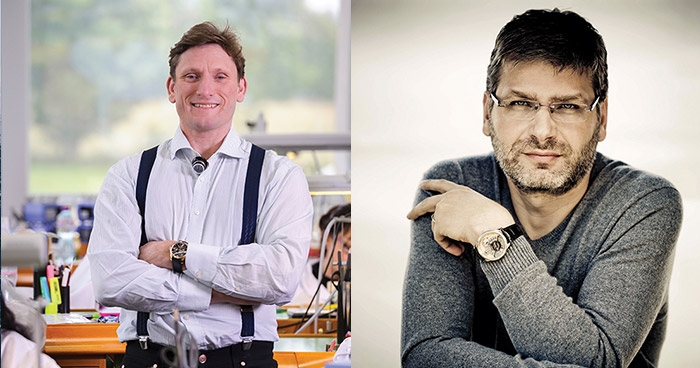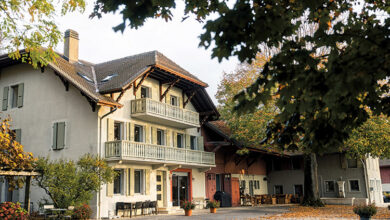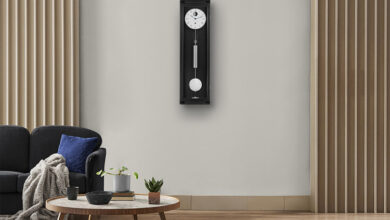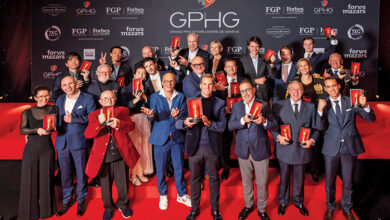Greubel Forsey: A decade and counting

Since watchmakers Stephen Forsey and Robert Greubel formed the formidable Greubel Forsey in 2004, the team has ceaselessly worked on creating highly technical timepieces of absolute unique refinement, aesthetics and architecture. In a rare opportunity, “Day & Night” magazine had the privilege to visit the home and recount the history of this remarkable company that pledges a continuous search for perfection in the craft of fine watchmaking
Acting as the two main pillars of the Greubel Forsey family, the watchmakers Stephen Forsey and Robert Greubel always aim to take a further step towards the realisation of what may appear to be technically inconceivable. The union of these watchmaking geniuses coupled with unlimited passion, technical expertise and meticulous craftsmanship leads to the creation of extraordinary products. The two watchmakers are the creators of seven mechanical inventions, five of which are now on the market. These complications have formed the heart of exceptional timepieces, generally only produced in limited or unique editions.

When Robert Greubel and Stephen Forsey teamed up and launched Greubel Forsey in 2004, they already shared the same philosophy and a certain number of principles. Convinced that room still existed for creativity in the development of complications in watchmaking, they refused to accept a widespread reliance on 18th century mechanisms to curb their creativity.
Their goal was to improve the performance of existing complications but also to invent innovative mechanisms. This spirit of research driven by insatiable curiosity has also allowed them to explore new areas of artistic expression. Over the years, they have honed their creative approach to fine watchmaking, notably with their Invention Pieces and Art Pieces – Timepieces created in collaboration with a contemporary artist. The technical and aesthetic aspects complement each another, giving rise to bold creations.
The quality and originality of Greubel Forsey’s work has rapidly become well known. Their regular output of fine Timepieces has been honoured with many prizes, (notably the Prix Gaïa in 2009, the Prix du Concours International de Chronométrie in Sketch of Mecano 2011 and the Grand Prix de l'Aiguille d'Or in GPHG 2015). Furthermore, the Greubel Forsey Atelier now participates in the Salon International de la Haute Horlogerie (SIHH) in Geneva, which brings together some of the most prestigious watchmaking brands.
The home
The visit to the home of Greubel & Forsey located in La Chaux-de-Fonds in the heart of the Swiss Jura Mountains presented the Greubel & Forsey work place that perfectly reflects the dual commitment to both heritage and ground-breaking innovation. Firstly, there is the Farmhouse, a splendid 17th-century rural building, which has been painstakingly restored. The watchmaking company has retained the spirit of the building with the vaulted cellar, the beams and even the sundial – a rare example of gnonomic art in the region. The understated combination of stone and wood creates a warm atmosphere in which to welcome visitors, and exchange ideas.

Directly linked to the Farmhouse is the contemporary building designed by architect Pierre Studer. Housing the Atelier, this building combines wood, metal, concrete and glass. Its sloping green roof creates the illusion that it could have risen from the ground through tectonic forces, yet simultaneously blending naturally into the landscape. From a technical standpoint, its double-skin glass façade acts as a natural thermal buffer zone. The building benefits from natural air conditioning, ensuring a constant temperature all year round, which is vital for creating the timepieces.
Inside, natural light floods the rooms which are located on either side of a spacious central atrium. The large number of floor to ceiling windows demonstrates the company’s willingness to share its passion and to exhibits a culture of transparency. Above all, the Atelier is a living space and a melting pot where day after day innovative ideas pervade. The design and transparency of the architectural form encourages discussion and the exchange of know-how, which in turn leads to new areas of exploration. The Greubel Forsey Atelier operates like a laboratory but is much closer to a Renaissance artist’s studio than to a traditional watch manufacturer.

The pillars
Robert Greubel was born in Alsace, France while Stephen Forsey grew up in St. Albans, England. They both inherited a passion for watchmaking– and in particular for complicated watches – from their fathers. Robert Greubel discovered his vocation for precision mechanics very early on. As a child he observed the work of his watchmaker father, before himself joining the family firm Greubel Horlogerie. His passion for watch movements with complications was to determine the development of his professional career.

Meanwhile, Stephen Forsey owes his profound interest in the subtleties of mechanics to his father. From 1987 he specialised in the restoration of old watches and became the restoration service manager at Asprey in London, before furthering his training at WOSTEP (Watchmakers of Switzerland Training and Educational Program, Neuchâtel). The professional destinies of Robert Greubel and Stephen Forsey first crossed paths in 1992.
Robert and Stephen play perfectly complementary roles. Robert is more concerned with the issues of design and creation, while Stephen excels in the more technical areas. But one thing is certain – they share a similar vision of contemporary fine watchmaking. For both men, each creation writes a new chapter in the story of watchmaking. They set out to invent original mechanisms to improve performance, such as the inclined tourbillon, the inclined double balance wheels or mechanical computer – and together to design the original architecture to house these mechanisms.
This spirit of research goes hand-in-hand with the extreme care devoted to putting the finishing touch to each individual component of their Timepieces. Robert and Stephen set themselves no limits. For Robert and Stephen, the making of Timepieces today goes far beyond merely making watches. Their research has led them towards contemporary art and many of their working methods mirror those of artists. This has given rise to the Art Piece series, designed in tandem with a number of visual artists.

However, their experimental activities – devoted to the future of fine watchmaking – are also balanced by a journey into the past. The aim of the programme known as Le Garde Temps – Naissance d’une Montre is to keep a number of traditional skills under threat from changes and progress in the watchmaking industry alive.
The origins
It was in Switzerland, the home of fine watchmaking, that the paths of the two watchmakers first crossed.
In 1999, the two watchmakers embarked upon an independent path of business and collaborated to perfect the tourbillon movement that was developed by Abraham- Louis Breguet in the late 18th century. In 2001, they founded the CompliTime SA company in La Chaux-de-Fonds, aiming to design and produce mechanisms with complications for reputed watch brands. Greubel Forsey was later created in 2004. Its first model, the Double Tourbillon 30° was presented to the public at Baselworld. It incorporates the first of Greubel Forsey’s seven inventions: a double tourbillon, whose second cage is positioned inside the first and inclined at a 30° angle.

Eleven years after the inception of the watchmaking company, Robert Greubel and Stephen Forsey have created seven inventions, five of which have been fully developed. They have also registered around fifty patents. Having explored and mastered tourbillons – notably the Double Tourbillon 30°, the Quadruple Tourbillon and the Tourbillon 24 Secondes; they then went on to develop the Double Balancier and the Computeur Mécanique (QP à Ø©quation). These inventions are the beating heart of their numerous Timepieces. The Master Watchmakers love nothing more than exploring different architectural interpretations – as with their Invention Pieces – even if this means that the time display takes second place.
The heritage
During their first decade, barely nine-hundred Timepieces in total have been completed in the Greubel Forsey workshops – on average, not more than one hundred each year. This speaks volumes about the quality of their workmanship and attention to detail. The story is told in the remarkable “Grand Livre”, in which the details of each exceptional creation are painstakingly inscribed by hand.
In an era of the Internet and digitalisation, Robert Greubel and Stephen Forsey chose to continue the secular tradition of keeping a ledger -the “Grand Livre”- to record this deeply human dimension of their fine watchmaking. Each handwritten entry is synonymous to a birth certificate for the Timepiece, as well as the basis for a record of its future. An important milestone in this journey is the collaboration with Christie’s auction house. This ensures that collectors will be able to acquire a Timepiece which is fully compliant with Greubel Forsey’s exacting criteria concerning quality and craftsmanship.

Importantly, the original built of each Greubel Forsey Timepiece offered for sale by Christie’s is authenticated. Throughout the year and across the world, Greubel Forsey and Christie’s join forces to help collectors obtain expert advice as well as an assessment of their Timepiece. This innovative approach is a part of Greubel Forsey’s way of accompanying its enthusiasts to maintain and preserve their collection.





